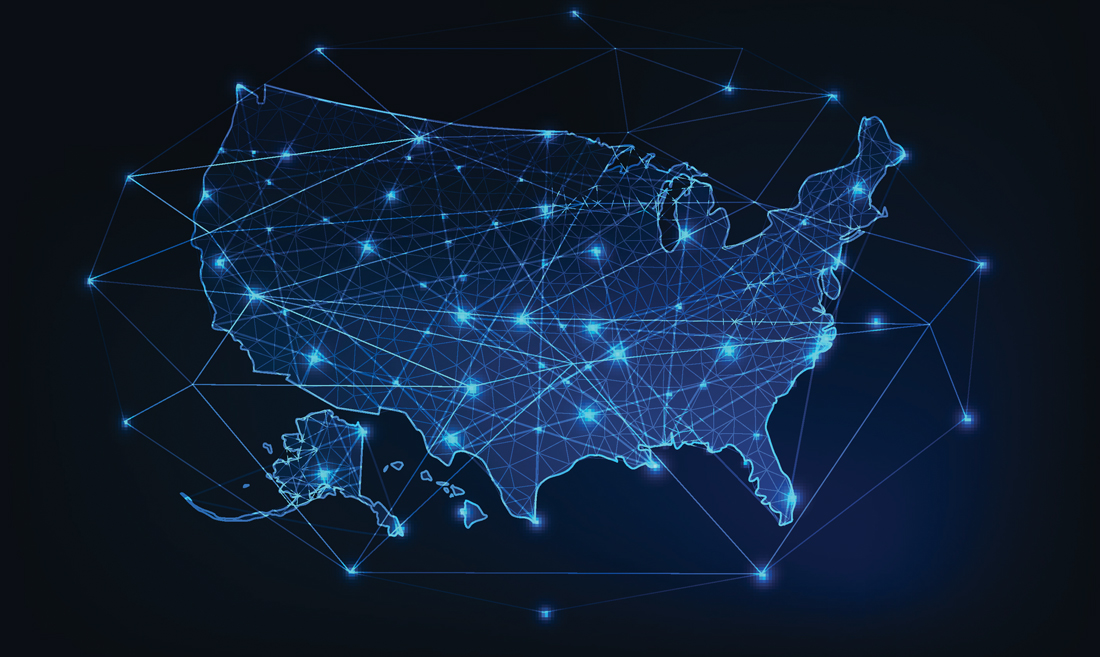An alarming number of people in America are cut off from opportunities afforded to the rest of us who have internet access. Microsoft data shows that more than one out of three people in the U.S. are not using the internet at what the Federal Communications Commission defines as a standard broadband connection, currently a speed of 25mbps down/3mbps up.
The gap in broadband usage is vast and hides deeper truths. Racial and ethnic minorities, people with disabilities and income-insecure families disproportionately lack a proper broadband connection. And in many rural areas, the infrastructure often does not exist to deliver this access. Persistent lack of broadband connectivity is a massive barrier to maintaining connection with loved ones as well as participation in the digital workforce, remote and hybrid learning, and telehealth to name a few, stagnating opportunity for those relegated to the “wrong side” of the digital divide.
Thankfully, this issue is finally getting significant attention and investment from lawmakers across the country, creating a once-in-a-generation opportunity to make real progress. Building upon existing broadband funding in the American Rescue Plan Act, the Infrastructure Investment and Jobs Act will provide an additional $65 billion in funding to close the digital divide, including, for the first time, funding to address digital literacy and skills gaps. Cumulatively, this is a historic opportunity. We must act swiftly and holistically to ensure we maximize these investments to enable digital equity for all – addressing broadband availability and affordability, while also ensuring access to affordable computing devices, and the digital skills necessary to unlock the power of broadband to improve quality of life.
Tackling the digital divide is a monumental task. As states begin to plan and roll out programs to take advantage of unprecedented broadband funding, we must resist the urge to build broadband infrastructure while sacrificing equally critical pillars of digital equity. Instead, states have a clear opportunity to lead with a few key principles:
Accurate, updated data. Unfortunately, historic funding levels were built on inaccurate datasets that don’t reflect the true scope of the divide. By leveraging multiple datasets, broadband access maps can reveal community gaps that can be solved, including the unmet needs of demographic groups and current/future funding efforts to address persistent poverty and historically low broadband adoption, guiding where infrastructure investments are needed most.
Inclusive projects. High-speed internet alone is not enough; policies and projects that ensure access to affordable broadband, affordable computing devices, and digital literacy and skilling will help communities leverage the full value of connectivity with the tools needed to get ahead.
Comprehensive planning and resourcing. Comprehensive planning is essential and must be conducted by an adequately staffed and resourced team with the necessary tools to address the lifecycle of funding, including program design, application processes, evaluation and award, and post-award oversight. This will best position states to effectively utilize these funds while minimizing unnecessary red tape in the new programs.
An “all of the above” approach. Since each community has different challenges, allowing the use of multiple providers and technologies can tailor solutions to specific use cases, thus avoiding unnecessary spend or redundant infrastructure. We must not allow the perfect to be the enemy of the good and should optimize for speed in extending broadband access to unserved and underserved communities. Every day, month or year a community lacks broadband is another day, month or year they fall farther and farther behind.
Public-private partnerships. It is critical that the public and private sectors work together to close the digital divide. Public agencies, private stakeholders like corporations and philanthropic institutions, and trusted nonprofits and community leaders must be actively engaged and can serve as champions to accelerate local projects.
We must move quickly and strategically to extend broadband access while confronting challenges like skilling and affordability. It is up to all of us to build a legacy of connectivity for our communities – one that erases a widening digital divide and ensures that no one is left behind.

